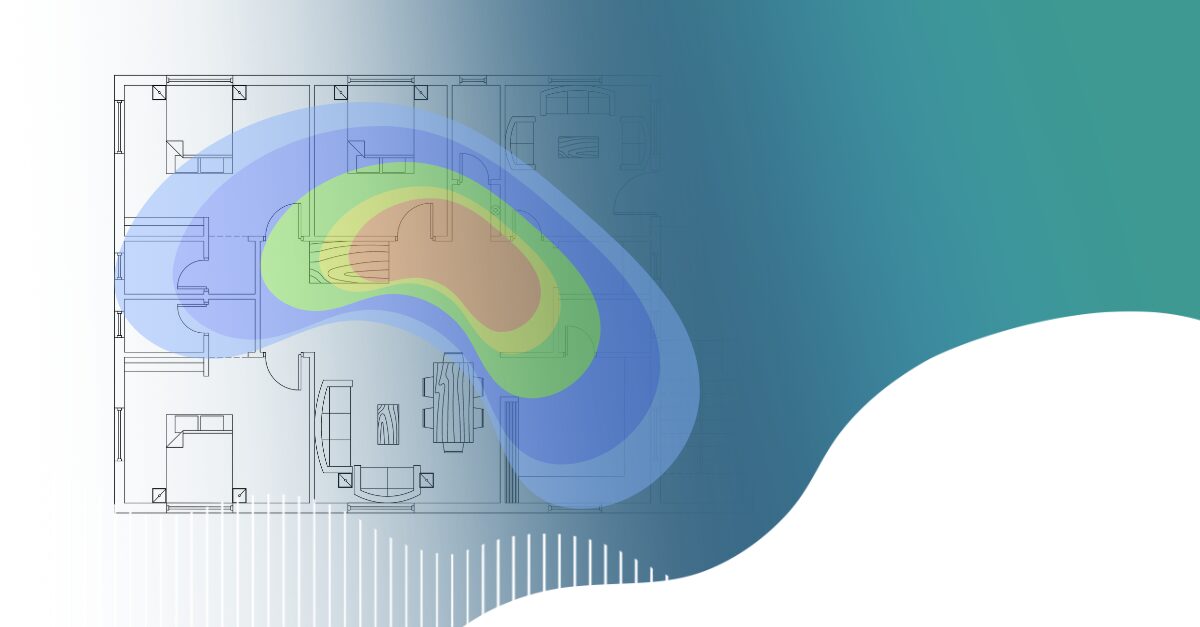Why you need a specialist WiFi survey
A dedicated engineer can accurately design a high-capacity WiFi network for your requirements based on a professional survey. They will create an entire visual plan and take into account wall materials, floor materials, antenna direction and up/downtilt, and many more factors. Design for coverage as well as capacity thanks to the advanced wireless planning features.
See what’s interfering with your WiFi with our Spectrum Analysis
WiFi works over public frequencies, which makes it vulnerable to interference from other devices sharing the same spectrum.
Our survey will validate the availability of free radio frequency spectrum by measuring channel utilisation and detecting non-WiFi interference from sources such as:
- Surveillance cameras
- Wireless intercom systems
- Headsets and microphones
- Microwave ovens
- Motion sensors
- Drones
- Game controllers
- Audio transmitters
- Bluetooth devices
- Cordless phones
- Pagers
Future Proof your WiFi
Our report will consider what future applications may come to rely on your WiFi network, such as:
- Voice Apps
- IoT
- Smart Building Functions
- CCTV
- Door Locks
- Panic Buttons
- Integration
What are the some of the issues we find when completing a WiFi survey?
Misconfigured access points
Inefficient and may render the AP useless
Missing security settings
Privacy and security risk
Excessive VoIP traffic or Access Point overload
Slows down the connection
Excessive number of stations per AP
Slows down the connection
Excessive interference (WiFi and non-WiFi)
Slows down the connection
Excessive load on a given channel
Slows down the connection
VoIP issues (jitter, packetloss, …)
Jitter is a variation in the delay of received packets (the basic unit of digital communication). Packet loss can occur due to a failed transmission or data overload.
Throughput problems
Throughput measures how quickly you can transfer data between two devices on the local wireless network.
Coverage holes
Rooms and services not getting signal
Insufficient WiFi capacity
Wireless capacity relates to the number of users who can use your wireless simultaneously in one place, and how (and at what rate) they are using bandwidth.
Poor Signal to Noise Ratios
Signal-To-Noise Ratio (SNR) indicates how much the signal strength is stronger than the noise (cochannel interference). Signal must be stronger than noise (SNR greater than zero) for data transfer to be possible. If the signal is only barely stronger than noise, you may encounter occasional connection drop-off
Sub-optimal channel assignments
Rogue wireless access points
An access point that has been installed on a secure network without explicit authorisation from a local network administrator whether mistakenly or maliciously.
If you’re facing WiFi challenges offshore and some of the above issues seem familiar, we’re here to help. Contact us today to learn how our Network as a Service (NaaS) solution can deliver reliable, high-performance connectivity — with no upfront investment required.
Our NaaS package includes:
- A professional heatmap survey that accounts for your vessel’s construction materials
- Best practice access point placement to reduce interference and improve performance
- Ruckus access points, featuring the latest WiFi technology.
- A fully managed service, ensuring your network is configured and maintained in line with your specific requirements
- A crew welfare usage management portal, allowing you to fairly distribute your data allowance between crew and control usage
- 24/7/365 support via our in-house Network Operations Centre (NOC)
Simple, flexible pricing starts at just £10 per access point per month.
Get in touch now and let’s create a network that meets the demands of your offshore operations.



